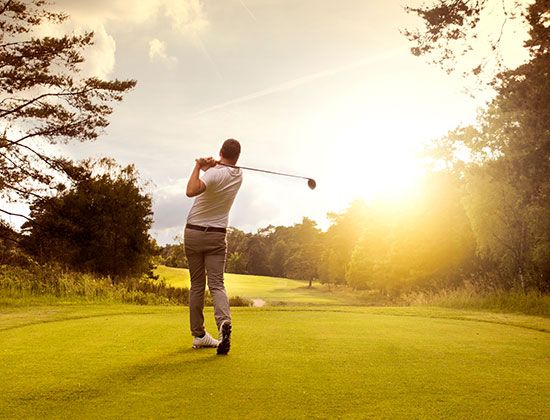Arthritis and Golf: tips on how to play pain-free
For some, golf is likely to bring with it a few aches and pains, especially among older golfers. It is a hugely popular sport for all ages and the use of handicap system allows older men and women to compete for many more years than is possible with most other sports. As previous Masters winner Bubba Watson said, “That's the great thing about golf. It doesn't matter how old or young you are; if you're 90 and can shoot a good score, people will want to play with you."
However, if conditions such as osteoarthritis is impacting on your golf game or any sport you enjoy, here are some tips on how to play on regardless, compiled in conversation with our Physician team:
Warm up properly
Golf may be seen as a low impact game, but this does not mean that you should skip a proper warm up. Studies have shown people who warm-up prior to playing golf have 50% fewer injuries than people who do not. Full range of movement is essential for a good game of golf and can also lessen strain on your joints. Try gentle stretching and simple range-of-motion exercises before you tee off, there are some suggestions here.
All the gear and no idea
Ask for advice from a specialist golf shop on the latest technology and kit that can help to minimise strain on your joints. This can include new lightweight graphite clubs - in addition to a lighter shaft, playing with a graphite shaft could help reduce vibrations in the arms and shoulders. Players who suffer from arthritis in their hands should try an oversize grip. The oversize grip is thicker than a regular grip and will not place as much pressure and tension on the hands and fingers while they wrap around a smaller grip. Other suggestions are conserving energy by taking only frequently-used clubs and using a motorised cart, lower compression golf balls, longer tees, golf gloves with extra grip and pads to ease hand pain and even orthopaedic golf shoes.
Focus on your swing
The main risk factor for injuries in golf is poor flexibility. The “follow-through” phase during a golf swing is when the back and shoulders are most vulnerable to injury. The Arthritis Society in Canada developed these swing tips for golfers living with arthritis. Advice includes keeping your grip tension consistent, adopting the classic swing rather than the modern or reverse-C swing, finishing the backswing early and finishing with your spine in as vertical as position as possible to minimise pressure on the spine. End your swing at the three o’clock position, rather than the one o’clock position. When you stop, your spine should be as vertical as possible to minimise the load on the lumbar spine.


